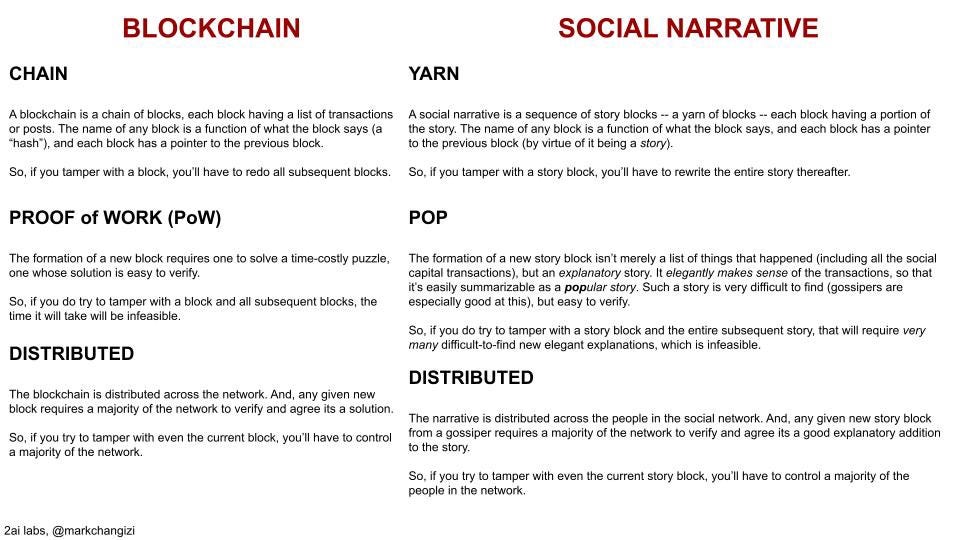Social narratives, scapegoating and why history is personal
Years ago, I argued that narratives are not just stories but ledgers—tracking the reputational “transactions” of individuals and groups. Like blockchains, they are almost impossible to rewrite. Once a narrative is cemented, facts alone rarely dislodge it.
Why? Because the narrative’s core function isn’t truth—it’s the maintenance of a social currency ledger. Who is up, who is down, who deserves credit, and who must be blamed? These reputational states are what the narrative records, and altering them requires social consensus, not evidence.
Over time I’ve realized this explains much more:
• Our impulse to scapegoat. A blockchain of reputation needs villains as much as heroes to mark the flows of blame and credit.
• Why history itself reads as biographies. We remember who rose and fell because the narrative blockchain is designed to track reputational stakes, not objective history.
Real history—events, causes, and systems—is often secondary. What survives in collective memory is what the social ledger deems most reputationally important. We think of history as a sequence of truths, but it’s more like a decentralized account book of honor and disgrace.
If you want to change a narrative, you don’t just present facts—you must re-stake reputation. You have to “rewrite the ledger” by shifting who is seen as credible, who is discredited, and why. That’s why breaking a false narrative feels like trying to fork Bitcoin.
[more info below….]
The social narratives that shape us. Moment 238
Social narratives have blockchain-like properties, making them difficult to overturn
On May 7, 2020, I discussed on Twitter how, once Covid collective hysteria got going, along with a new narrative, it was going to be very difficult to ever get rid of it.


